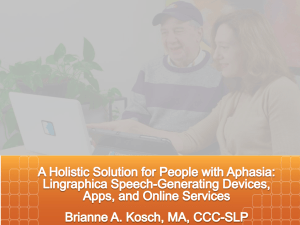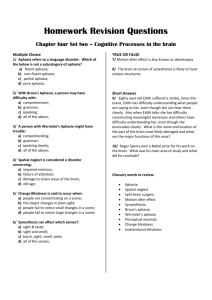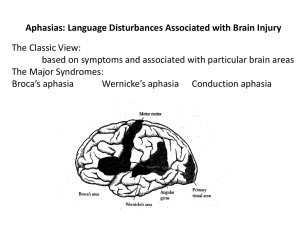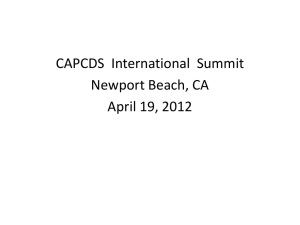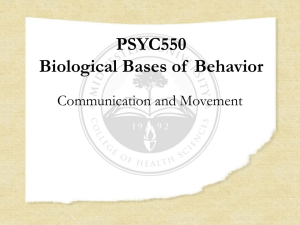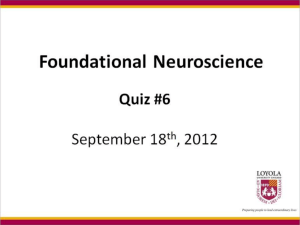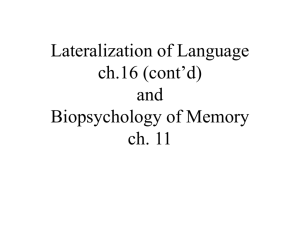doc - Shoreline Community College
advertisement
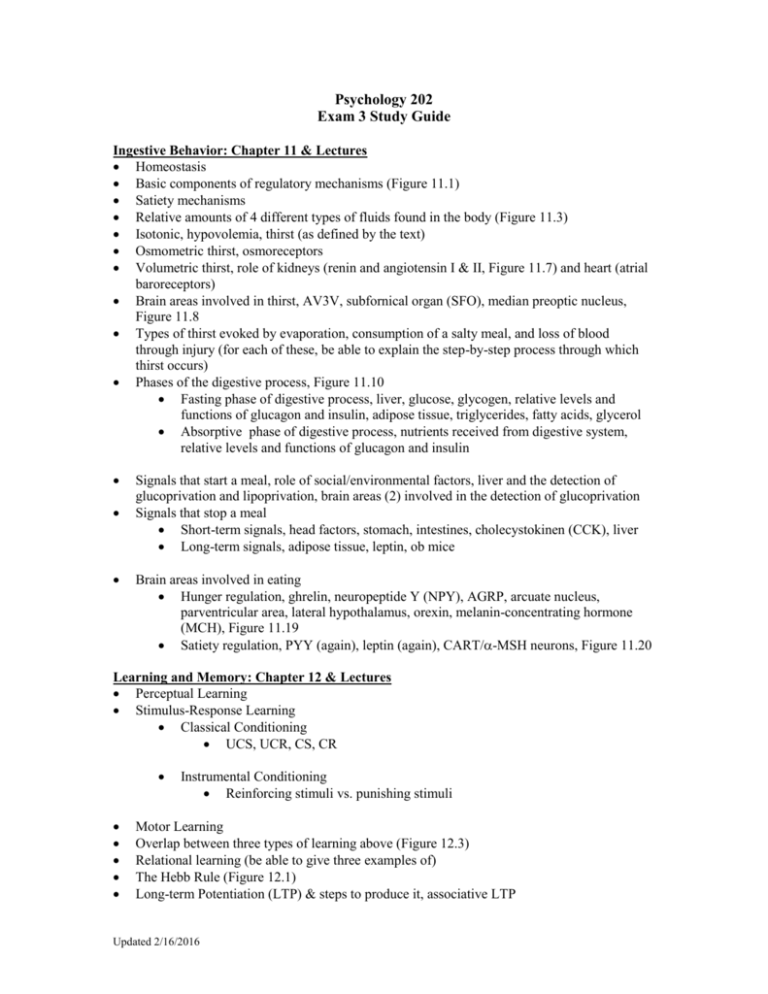
Psychology 202 Exam 3 Study Guide Ingestive Behavior: Chapter 11 & Lectures Homeostasis Basic components of regulatory mechanisms (Figure 11.1) Satiety mechanisms Relative amounts of 4 different types of fluids found in the body (Figure 11.3) Isotonic, hypovolemia, thirst (as defined by the text) Osmometric thirst, osmoreceptors Volumetric thirst, role of kidneys (renin and angiotensin I & II, Figure 11.7) and heart (atrial baroreceptors) Brain areas involved in thirst, AV3V, subfornical organ (SFO), median preoptic nucleus, Figure 11.8 Types of thirst evoked by evaporation, consumption of a salty meal, and loss of blood through injury (for each of these, be able to explain the step-by-step process through which thirst occurs) Phases of the digestive process, Figure 11.10 Fasting phase of digestive process, liver, glucose, glycogen, relative levels and functions of glucagon and insulin, adipose tissue, triglycerides, fatty acids, glycerol Absorptive phase of digestive process, nutrients received from digestive system, relative levels and functions of glucagon and insulin Signals that start a meal, role of social/environmental factors, liver and the detection of glucoprivation and lipoprivation, brain areas (2) involved in the detection of glucoprivation Signals that stop a meal Short-term signals, head factors, stomach, intestines, cholecystokinen (CCK), liver Long-term signals, adipose tissue, leptin, ob mice Brain areas involved in eating Hunger regulation, ghrelin, neuropeptide Y (NPY), AGRP, arcuate nucleus, parventricular area, lateral hypothalamus, orexin, melanin-concentrating hormone (MCH), Figure 11.19 Satiety regulation, PYY (again), leptin (again), CART/-MSH neurons, Figure 11.20 Learning and Memory: Chapter 12 & Lectures Perceptual Learning Stimulus-Response Learning Classical Conditioning UCS, UCR, CS, CR Instrumental Conditioning Reinforcing stimuli vs. punishing stimuli Motor Learning Overlap between three types of learning above (Figure 12.3) Relational learning (be able to give three examples of) The Hebb Rule (Figure 12.1) Long-term Potentiation (LTP) & steps to produce it, associative LTP Updated 2/16/2016 Underlying mechanisms that produce LTP: role of NMDA receptors, dendritic spikes, calcium Three LTP-induced structural changes occurring at synapses: Increase in AMPA receptors Perforated synapses Nitric oxide (NO) signals increased release of glutamate in presynaptic neuron Long-term depression Perceptual learning Roles of dorsal and ventral pathways Classical Conditioning Brain areas where LTP-like process may occur (Figure 12.16): lateral nucleus of the amygdala, cerebellum (presented in lecture) Instrumental and motor learning 2 Pathways involved in instrumental learning Reinforcement pathways: mesolimbic system, nucleus accumbens, dopamine, & mesocortical pathway Relational learning Anterograde amnesia vs. retrograde amnesia Patient H.M.: basic cognitive functioning, types of learning he does/doesn’t display Declarative (explicit) vs. nondeclarative (implicit) memory Evidence that LTP and hippocampal neurogenesis are involved in relational learning (see pages 372-373) Human Communication: Chapter 13 & Lectures Lateralization, aphasia Broca’s area, Broca’s aphasia: 3 major speech production deficits + comprehension deficit (See Figure 13.3 and results of Schwartz et al., 1980) Wernicke’s area, Wernicke’s aphasia Pure word deafness, transcortical sensory aphasia, autotopagnosia, anomic aphasia, conduction aphasia, arcuate fasciculus Figure 13.8 (brain structures, connections, and functions), Figure 13.11 (note addition of “direct” arcuate fasciculus pathway), & Table 13.1 Pure alexia and brain damage that produces it (Figure 13.18) Whole-word vs. phonetic reading Acquired dyslexias, surface dyslexia, phonological dyslexia, direct dyslexia Developmental dyslexia, behavioral correlates (3) in addition to reading difficulty (presented in lecture), magnocellular system (presented in lecture), correlation of occipitotemporal complex activity with reading ability Table 13.2 (Reading disorders only) Updated 2/16/2016

